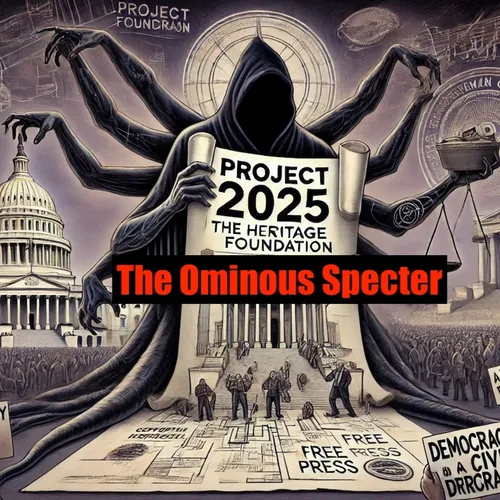Transformative Conservative Agenda: Project 2025's Sweeping Vision for Reshaping American Governance
- Author
- Quiet.Please
- Published
- Thu 17 Apr 2025
- Episode Link
- https://www.spreaker.com/episode/transformative-conservative-agenda-project-2025-s-sweeping-vision-for-reshaping-american-governance--65616163
As I delve into the intricacies of Project 2025, a initiative spearheaded by the Heritage Foundation, a prominent conservative think tank, it becomes clear that this is more than just a policy blueprint – it’s a comprehensive vision for reshaping American governance. This project, which has garnered significant attention and controversy, aims to guide the next conservative presidential administration in implementing a wide array of policy changes that could profoundly impact various aspects of American life.
At its core, Project 2025 is a collaborative effort involving over 100 respected organizations from the conservative movement. The project's foundation is laid out in the book "Mandate for Leadership: The Conservative Promise," published in April 2023, which is the culmination of work by more than 400 scholars and policy experts. This document outlines a sweeping policy agenda that touches on nearly every major federal agency and aspect of government operations.
One of the key pillars of Project 2025 is the restructuring of federal agencies and the way they operate. For instance, the project proposes to "de-weaponize the Federal Government" by increasing accountability and oversight of the FBI and the Department of Justice. This includes measures to make federal bureaucrats more accountable to the democratically elected President and Congress, a move that critics argue could erode the independence and integrity of these agencies[1][3][5].
Another significant area of focus is energy policy. Project 2025 advocates for unleashing American energy production to reduce energy prices, a goal that aligns with broader conservative sentiments on energy independence. However, this approach also raises concerns about environmental regulations and the long-term sustainability of such policies[1][5].
Education is another sector that would see substantial changes under Project 2025. The initiative suggests moving control and funding of education from federal bureaucrats directly to parents and state and local governments. Proponents argue this would increase local control and efficiency, while critics worry it could lead to unequal access to quality education across different regions[1].
The project also delves into highly contentious issues such as immigration and reproductive rights. It proposes securing the border, finishing the wall, and deporting illegal aliens, as well as transferring the custody of immigrant children from Health and Human Services to the Department of Homeland Security. This move is criticized for prioritizing enforcement over welfare and potentially worsening the safety and psychological well-being of vulnerable immigrant children[1][4].
On reproductive rights, Project 2025 calls for the revival of the 19th-century Comstock Act to ban abortion medications and materials from being sent through the U.S. Postal Service, and the reversal of the FDA’s approval of mifepristone. These proposals are part of a broader effort to restrict abortion access, which has been met with fierce opposition from organizations like the American Civil Liberties Union (ACLU)[3][4].
The project's ambitions extend to the very structure of the federal government. It aims to establish a more unitary executive branch by increasing the president's authority over federal agencies. This includes reissuing Trump’s Schedule F executive order, which would allow the dismissal of federal employees deemed 'non-performing' or disloyal. Critics argue this could erode the system of checks and balances and lead to the politicization of the federal workforce[4].
Despite President Trump's public distancing from Project 2025 during his campaign, many of the policies he has implemented align closely with the project's proposals. For example, Trump's executive order ending diversity, equity, and inclusion (DEI) programs within the federal government mirrors Project...
